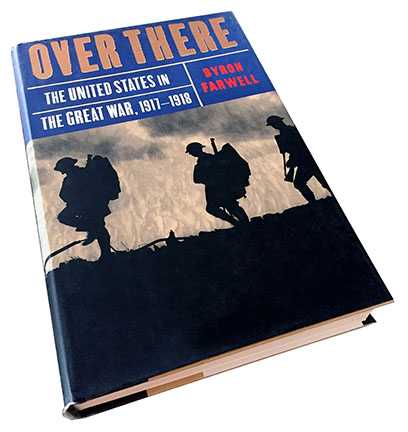Over There

A wonderfully concise history of America's first conflict overseas, Over There successfully balances a great body of scholarship with the need to tell a good story. It starts out in 1914, with the United States unprepared (both physically and politically) to fight, then tells how, in 1917, the country quickly created a combat force that helped break a long stalemate on the Western front of Europe. Farwell, a veteran author of military history, offers important insights into the nature of the Great War: "Strategy was replaced by logistics and battles were fought with strange, unfamiliar weapons of previously unimagined frightfulness," such as tanks, planes, and flame-throwers. Despite these technological advances, other aspects of the war were strikingly primitive. Officers on the front sometimes relied on carrier pigeons to send messages to headquarters, even releasing these poor birds in the middle of intense combat.
Farwell has the good sense to populate his narrative with cameo appearances by familiar figures such as Harry Truman, who fought with an artillery company, and Dwight Eisenhower, who narrowly missed seeing combat and regretted the war's end because, as a West Point-trained trooper, he desperately wanted to fight. Farwell also offers a glossary of soldier slang (to "read a shirt" was to inspect it for lice, for example). An appendix describes the exploits of "rough-cut hillbilly hero" Sergeant York, as well as the famed "Lost Battalion," which was trapped behind enemy lines without food for more than 100 hours, suffered terrible casualties, and refused to surrender. In all, Over There is hard to beat as introduction to the American role in the First World War.